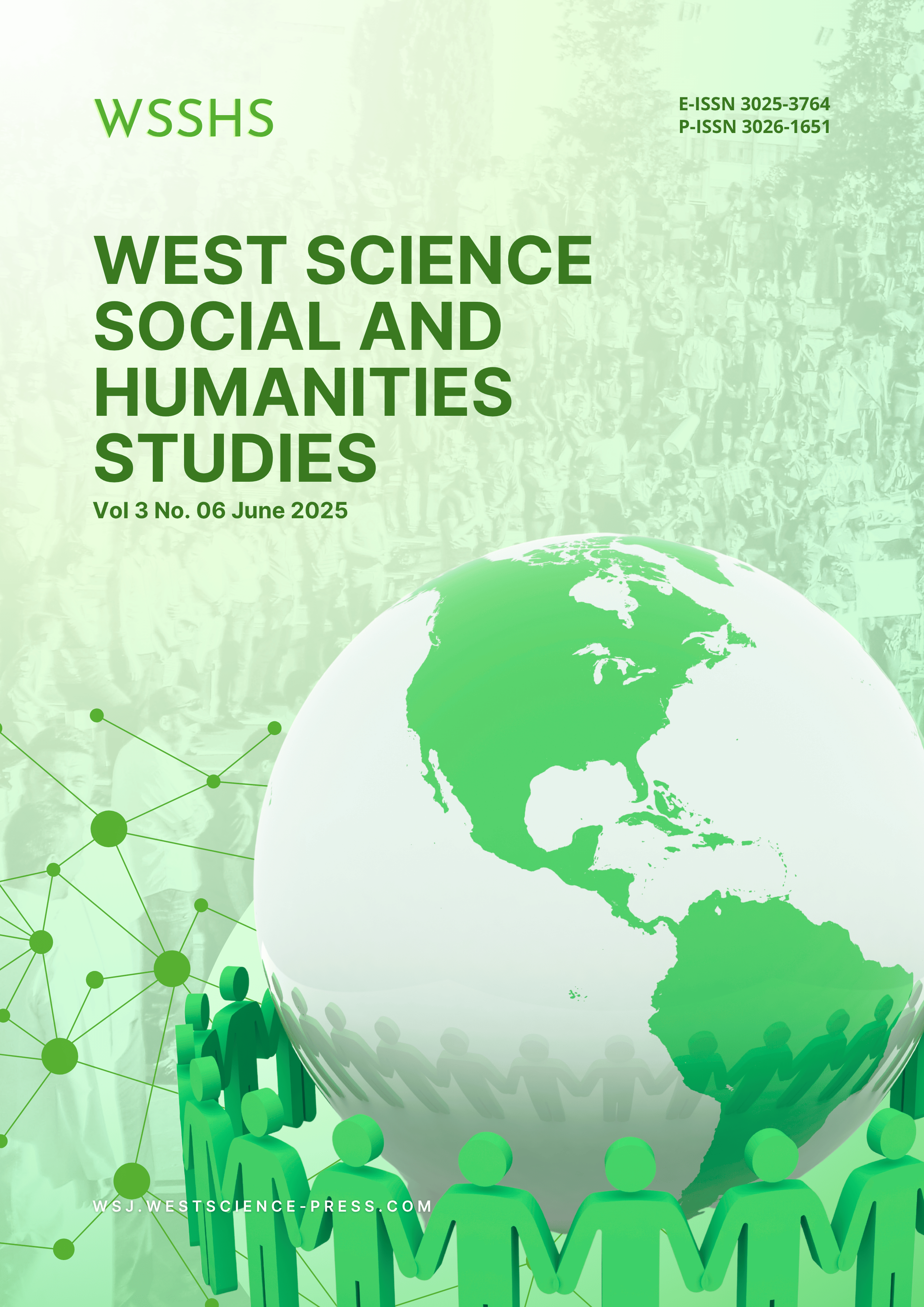Bibliometric Analysis on Oil Palm, Food Security, and Bioenergy
DOI:
https://doi.org/10.58812/wsshs.v3i06.2006Keywords:
Palm Oil, Bioenergy, Food Security, Biodiesel, Bibliometric AnalysisAbstract
This study presents a bibliometric analysis of global research on oil palm, food security, and bioenergy, aiming to map the intellectual structure, thematic evolution, and collaboration networks in this multidisciplinary domain. Using data from the Scopus database (2000–2024) and analyzed through VOSviewer, the study identifies key trends, influential authors, and emerging research themes. The results reveal that early research predominantly focused on the role of palm oil in biodiesel and biofuel production, while recent studies increasingly emphasize environmental sustainability, waste-to-energy technologies, and circular economy principles. Core keywords such as palm oil, bioenergy, and biodiesel remain central, with newer themes like anaerobic digestion and greenhouse gas gaining momentum. Malaysia leads in publication output and collaboration intensity, followed by the United States and the Netherlands. Despite robust growth in bioenergy-related research, the food security dimension remains underexplored. The study highlights the need for more integrated, socially inclusive, and geographically diverse research to support sustainable palm oil systems in the context of global food–energy–land challenges.
References
[1] P. Osseweijer et al., “Bioenergy and food security,” Bioenergy Sustain. Bridg. Gaps (eds Souza GM, Victoria R, Joly C, Verdade L)(Chapter 4), vol. 72, p. 779, 2015.
[2] T. Koizumi, “Biofuels and food security,” Renew. Sustain. Energy Rev., vol. 52, pp. 829–841, 2015.
[3] M. N. A. Hassan, P. Jaramillo, and W. M. Griffin, “Life cycle GHG emissions from Malaysian oil palm bioenergy development: The impact on transportation sector’s energy security,” Energy Policy, vol. 39, no. 5, pp. 2615–2625, 2011.
[4] S. Matemilola, I. Elegbede, F. Kies, G. Yusuf, G. Yangni, and I. Garba, “An analysis of the impacts of bioenergy development on food security in Nigeria: Challenges and Prospects,” Environ. Clim. Technol., vol. 23, no. 1, pp. 64–83, 2019.
[5] K. L. Kline et al., “Reconciling food security and bioenergy: priorities for action,” Gcb Bioenergy, vol. 9, no. 3, pp. 557–576, 2017.
[6] A. Müller, J. Schmidhuber, J. Hoogeveen, and P. Steduto, “Some insights in the effect of growing bio-energy demand on global food security and natural resources,” Water Policy, vol. 10, no. S1, pp. 83–94, 2008.
[7] A. Faaij, “Bioenergy and global food security,” Environment, vol. 78, pp. 660S-663S, 2008.
[8] P. Papilo et al., “Palm oil-based bioenergy sustainability and policy in Indonesia and Malaysia: A systematic review and future agendas,” Heliyon, vol. 8, no. 10, 2022.
[9] N. Donthu, S. Kumar, D. Mukherjee, N. Pandey, and W. M. Lim, “How to conduct a bibliometric analysis: An overview and guidelines,” J. Bus. Res., vol. 133, pp. 285–296, 2021.
[10] D. M. Lapola et al., “Indirect land-use changes can overcome carbon savings from biofuels in Brazil,” Proc. Natl. Acad. Sci., vol. 107, no. 8, pp. 3388–3393, 2010.
[11] A. Kushairi et al., “Oil palm economic performance in Malaysia and R&D progress in 2017,” J. Oil Palm Res, vol. 30, no. 2, pp. 163–195, 2018.
[12] B. Phalan et al., “Crop expansion and conservation priorities in tropical countries,” PLoS One, vol. 8, no. 1, p. e51759, 2013.
[13] P. W. Gerbens-Leenes, A. R. Van Lienden, A. Y. Hoekstra, and T. H. Van der Meer, “Biofuel scenarios in a water perspective: The global blue and green water footprint of road transport in 2030,” Glob. Environ. Chang., vol. 22, no. 3, pp. 764–775, 2012.
[14] A. Giwa, A. Alabi, A. Yusuf, and T. Olukan, “A comprehensive review on biomass and solar energy for sustainable energy generation in Nigeria,” Renew. Sustain. Energy Rev., vol. 69, pp. 620–641, 2017.
[15] J. Sadhukhan et al., “Role of bioenergy, biorefinery and bioeconomy in sustainable development: Strategic pathways for Malaysia,” Renew. Sustain. Energy Rev., vol. 81, pp. 1966–1987, 2018.
[16] C. Bessou, C. Basset-Mens, T. Tran, and A. Benoist, “LCA applied to perennial cropping systems: a review focused on the farm stage,” Int. J. Life Cycle Assess., vol. 18, pp. 340–361, 2013.
[17] A. G. Olabi et al., “Role of microalgae in achieving sustainable development goals and circular economy,” Sci. Total Environ., vol. 854, p. 158689, 2023.
[18] A. Kushairi et al., “Oil palm economic performance in Malaysia and R&D progress in 2018,” J. Oil Palm Res., vol. 31, no. 2, pp. 165–194, 2019.
[19] J. C. Ogbonna, N. Nomura, and H. Aoyagi, “Bioenergy production and food security in Africa,” African J. Biotechnol., vol. 12, no. 52, pp. 7147–7157, 2013.
Downloads
Published
Issue
Section
License
Copyright (c) 2025 Loso Judijanto

This work is licensed under a Creative Commons Attribution-ShareAlike 4.0 International License.




















 Instagram
Instagram 